A Decoration Day Disaster: The Grisly 1897 Tally-Ho Accident
On May 31, 1897, Decoration Day, a group of young adults from the Greene Avenue Baptist Church in Stuyvesant Heights were gathering for a celebration of the holiday we now call Memorial Day.

Victims of the disaster. Image via The Brooklyn Daily Eagle
Editors note: This post originally ran in 2015 and has been updated. You can read the previous post here.
On May 31, 1897, Decoration Day, a group of young adults from the Greene Avenue Baptist Church in Stuyvesant Heights were gathering for a celebration of the holiday we now call Memorial Day.
The group of young people were in their late teens and early 20s. Many of the boys were members of the Alpha Delta Theta fraternity, which was organized through the church. The girls were church members, and most were upscale kids who lived in Stuyvesant Heights and knew one another from their schools, the neighborhood and church.
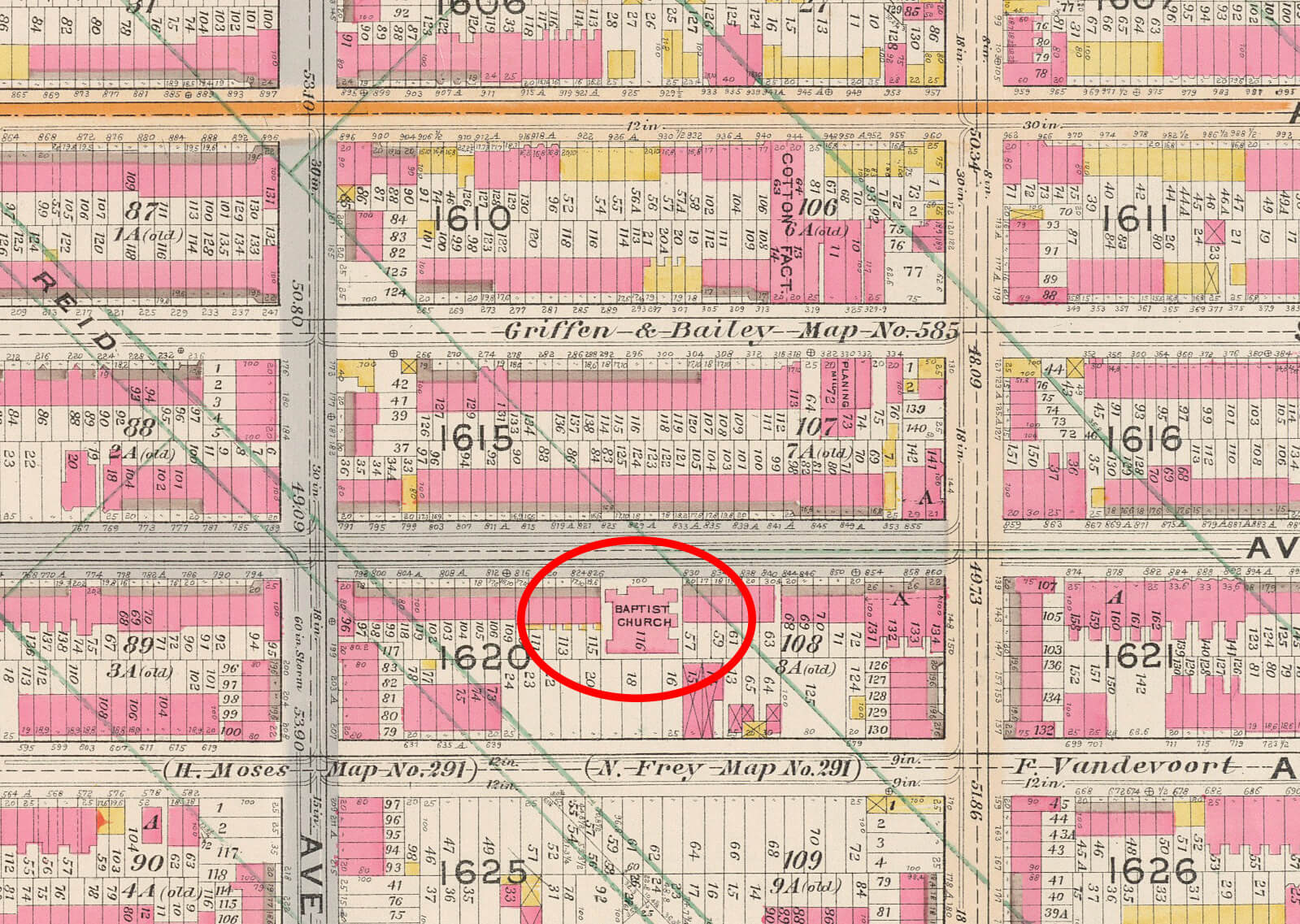
A majority of the kids and some of the chaperones were going to ride their bicycles to Long Island, but one group wanted to really make a party out of it. So they hired a coach, team and drivers to take them out to the Island, and things didn’t quite go as planned.
The coach was called a tally-ho, a familiar sight in the late 19th century. It was an open stagecoach drawn by a team of four or six horses, usually wrangled by a driver and his assistant.
Some models had a cabin where people could sit, but most tally-ho coaches had open seating on top of the coach itself. They were heavy — over two tons — and could hold about 25 people, many of them practically hanging off the sides. The coaches were commonly used for leisurely excursions such as this.
The young man, Lawrence K. Barnes Jr., and his friends went to the stable the morning of the trip and decorated the tally-ho with ribbons in the Alpha Delta Theta colors, bunting and bright flags. The carriage arrived at the church all festooned and ready for a fun day.
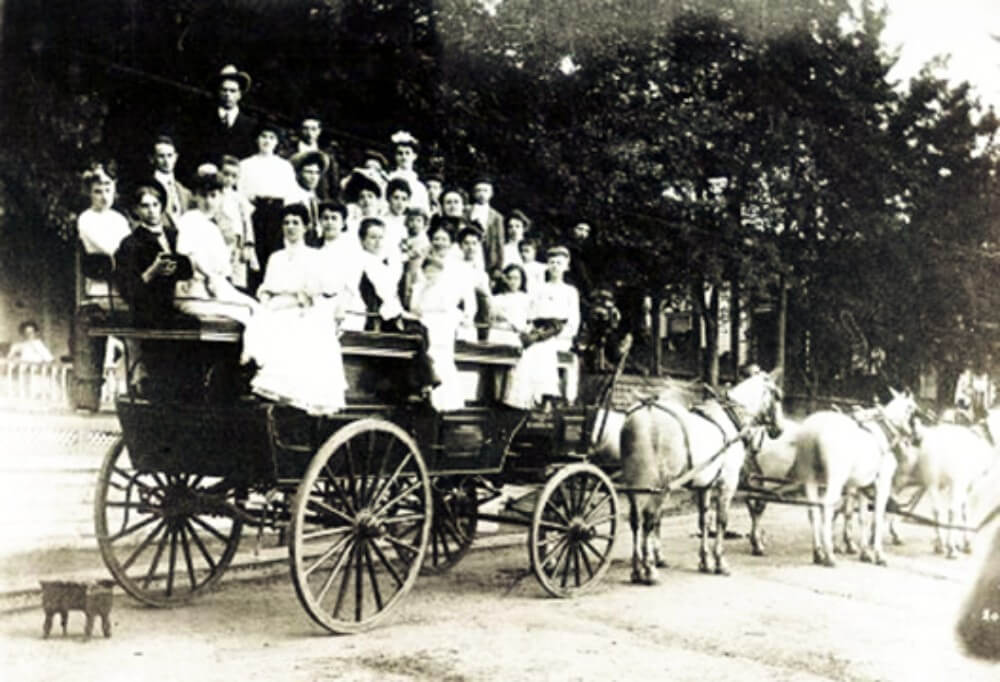
The kids and chaperones who weren’t on the coach, about 40 of them, set on off on their bikes. Meanwhile, the group in the tally-ho, along with their chaperone, Mrs. Newell P. Andrus, made a couple of trips on the way to the road to Long Island, stopping at other lawn parties and picking up more riders.
The coach driver, Henry McCormick, specialized in driving tally-hos and other coaches that utilized a larger team of four or more horses. His helper, Edward Kenney, had worked at the Hamilton Stables for several years.
The group made their way through Stuyvesant Heights, Bushwick, Jamaica and on toward Valley Stream. Everyone was laughing, singing and blowing party horns. They were on the Merritt Road just outside of Valley Stream when the unthinkable happened.
The tally-ho caught up to most of the cyclists. Witnesses said that the people on board were tooting their horns and shouting, and the cyclists were standing by the side of the road waving to the laughing group on board. People who lived in the area saw the cyclists and the coach go by, the latter pretty slowly.
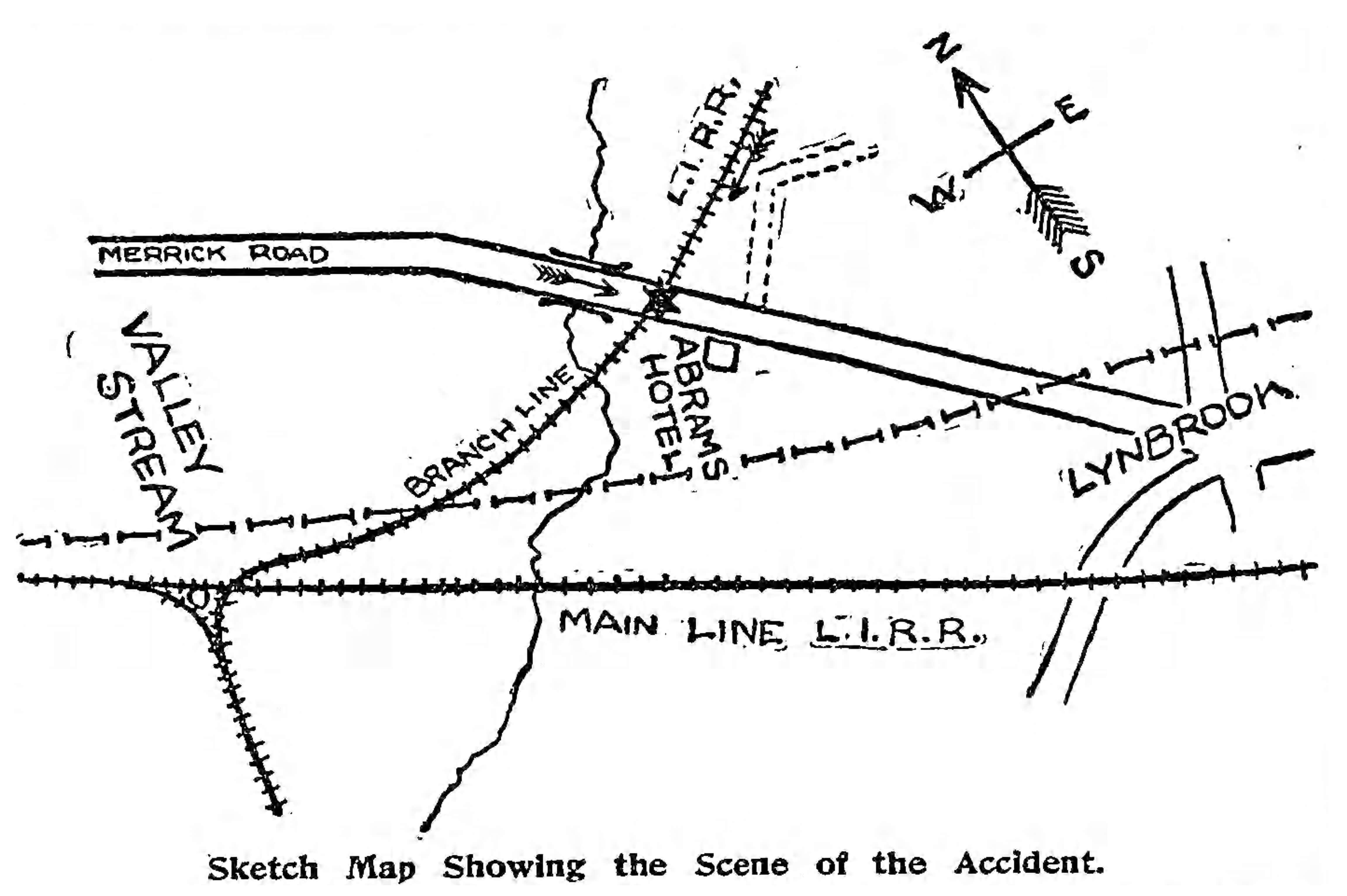
Up ahead was a railroad crossing. The Long Island Railroad tracks cut through some woods and overgrown bushes at that point, before the clearing where the tracks crossed the road. When the train reached a certain point on the track, well before the crossing, its passage triggered an electric bell that warned those on the road that the train was approaching.
Train operators would also sound their own horns, letting people know the train was coming. The crossing did not have any kind of fencing or bar that came down to prevent crossing the tracks, or any attendants.
The two-ton tally-ho made its way down Merrick Road and proceeded to cross the train tracks. It was right in the middle of the track when a train came out of nowhere and hit the rear wheel of the coach.
The coach and the men and women on board went flying. The tally-ho was crushed and broken apart, with pieces of wood and iron flying, along with the bodies.
Later, the driver of the coach, McCormick, would testify that the bell that was supposed to warn of an approaching train never sounded. He also said he never heard the train ring its own warning, either. Because of the bushes, he didn’t see the train until it was about 40 feet from him, at which time he tried to get the coach off the tracks.
The train engineer saw the coach at the same time and tried to stop, but couldn’t. He clipped the back wheel, causing the tally-ho to flip into the air, flinging people right and left. The shattered pieces of the wood and steel coach became missiles.
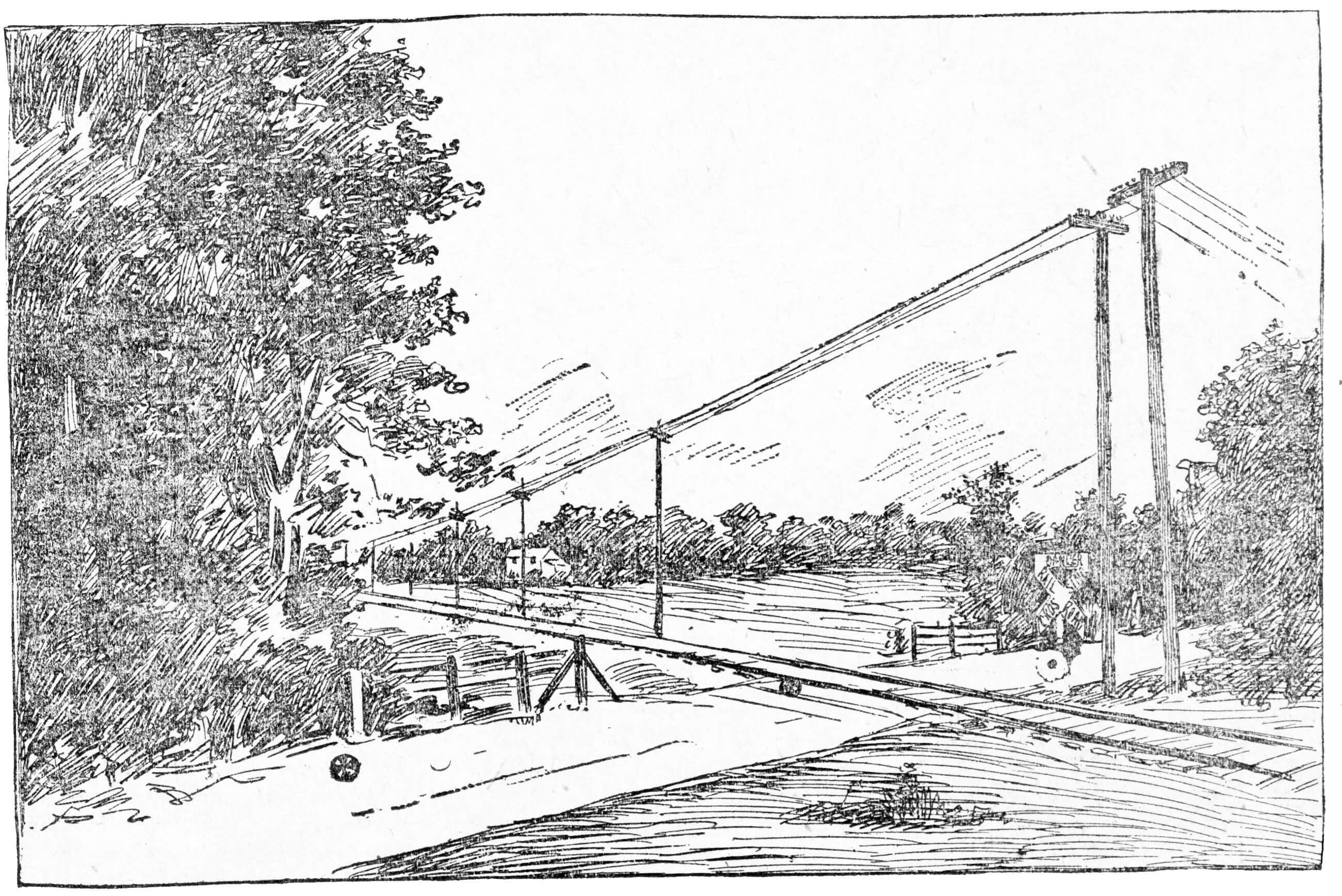
One of the young men on the coach, 18-year-old Harry S. Lewis, was at the very top of the tally-ho. He was the only one to see the smoke trail of the engine and yelled for everyone to jump.
But no one heard him in the noise of the group’s fun and laughter and the blowing horns. With only seconds to spare, he tried to pull the girl next to him off the coach.
He wasn’t strong enough, she didn’t understand what he was trying to do, and his momentum caused him to fall off right before the train smashed into the tally-ho. He saw his older brother die, and his companions crushed and maimed.
When the dust settled, bodies of young people and the remains of the coach were scattered on the track and in the surrounding area. Astonishingly, the team of horses was unhurt and just standing there, waiting for someone to take care of them. But the tally-ho was a blood-covered wreck.
Four boys and one girl were dead at the scene. Another boy died before he could be taken to the hospital. At least 20 other tally-ho passengers were seriously wounded, and several of those were not expected to survive.
The cyclists in the group looked on in horror at the scene. Some of them rode to nearby homes and businesses to get help. Of all of the people on the tally-ho, only two were not injured at all, including Harry Lewis. He and others rushed to help whomever they could.
The girl Harry had tried to help, a Miss Stewart, was lying in the dirt, her clothes completely ripped off. She was screaming in pain. He and his friend covered her with something and moved on.
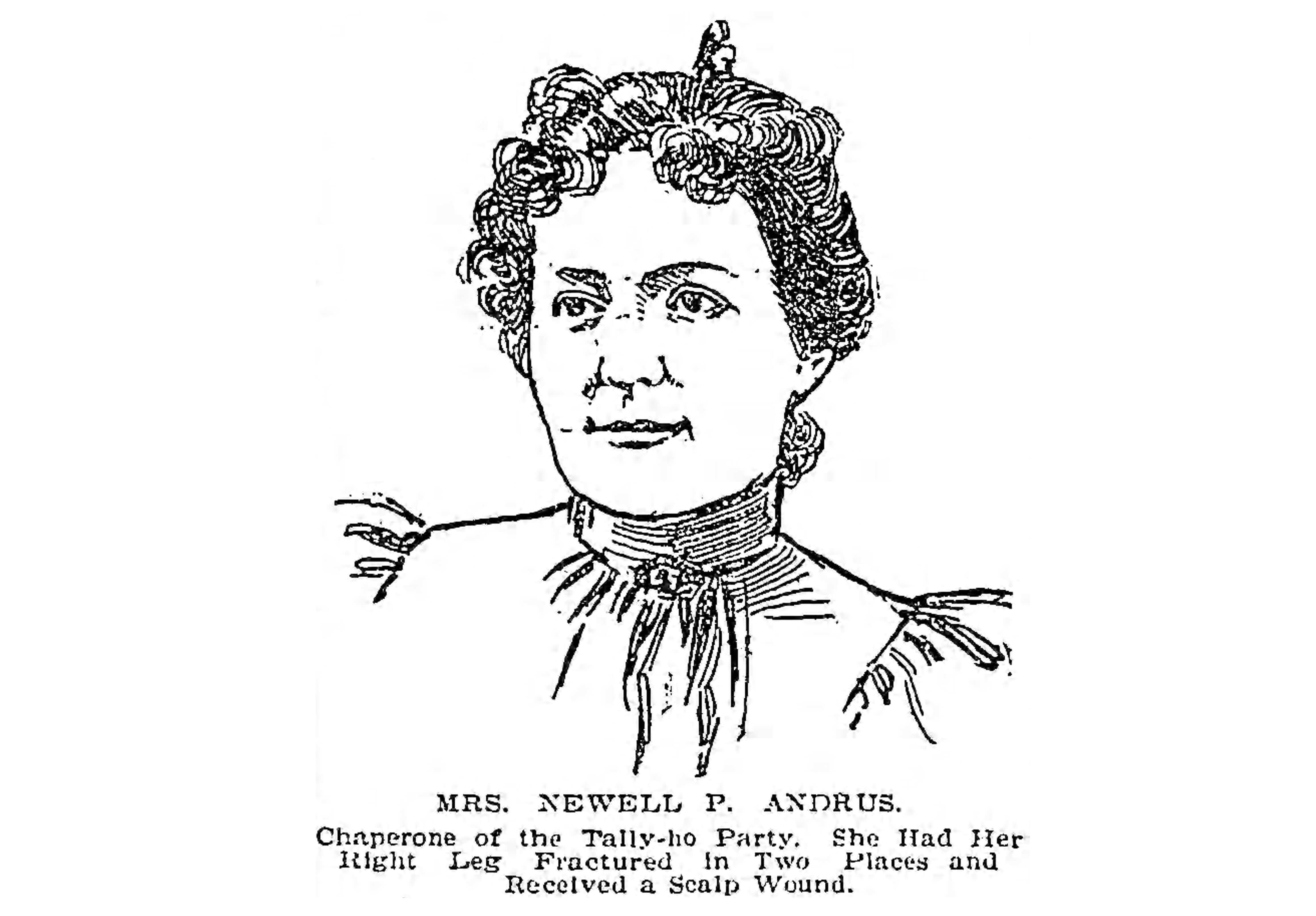
They found Lawrence Barnes, the boy who had rented the coach, in a muddy pool of water, which had broken his fall. He was face down, unconscious but alive. They pulled him out, made sure he was breathing and moved on.
Other people rushed to help, but for many it was too late. The train operator rushed from the train to find the body of a girl draped over the cowcatcher. They thought she was dead, but she groaned in pain and was lifted carefully from the iron arms of the engine.
Another boy, William Gilchrist was dead, his skull fractured and his leg broken so badly that it dangled from his body.
Young Harry’s brother Leslie died of a broken neck, with both legs broken and a fractured skull. A third boy, George Pashley, was identified by his wallet and the contents of his pocket. His body was so damaged it was the only way to recognize him.
The young woman who died was Miss Dora Bertsch of Stuyvesant Avenue. Her face was untouched, and her body undamaged except for the large shard of wood that been driven though the back of her head. Her sister was one of the most badly wounded, and she would later die from her injuries.
Many of the survivors had broken bones, internal injuries, skull fractures and other serious wounds. It took doctors and emergency workers about 20 minutes to start arriving, and the injured were taken to local hospitals, some by the train that hit them.
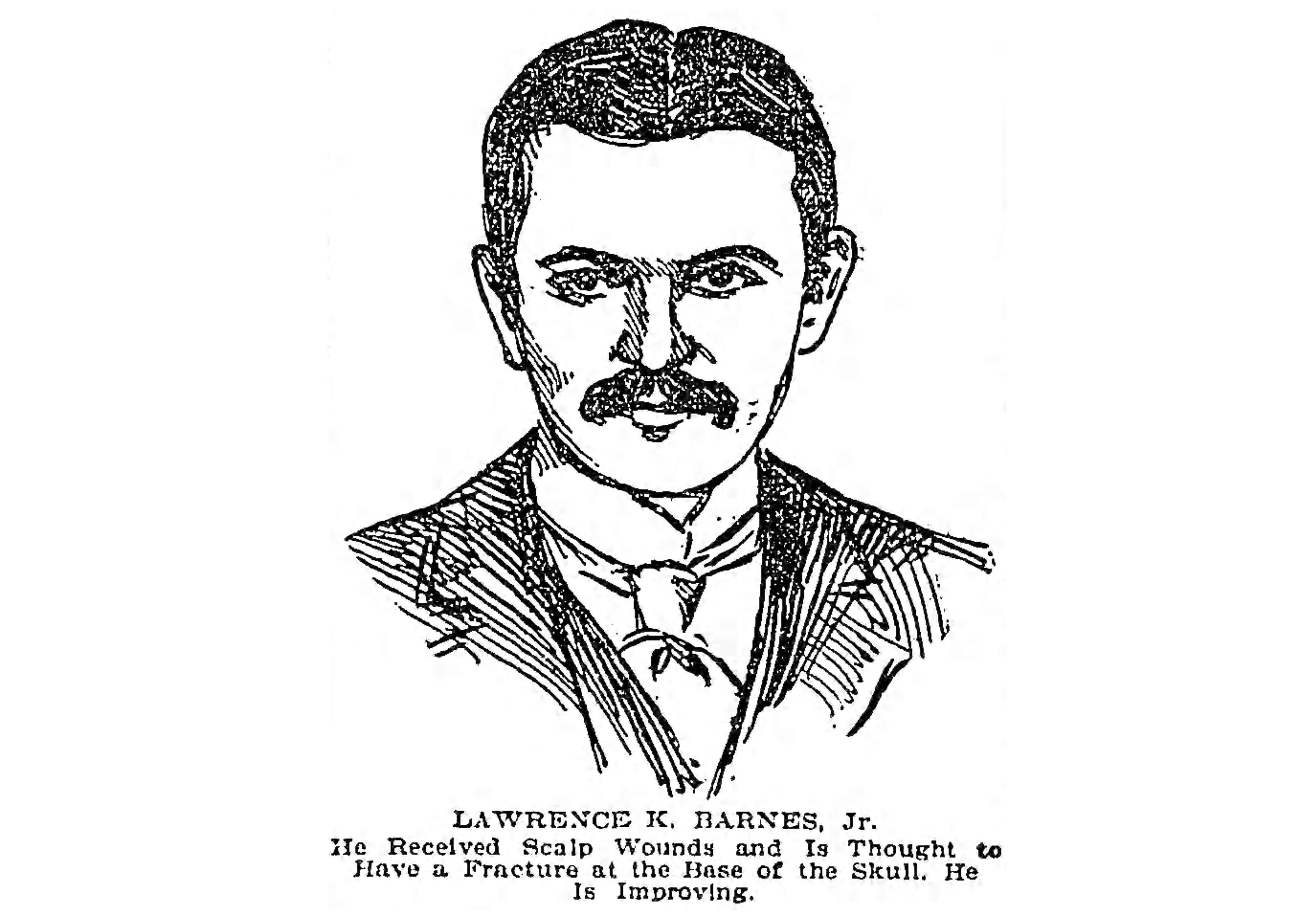
The dead were taken to a makeshift morgue. The horrible task of notifying families went to the hospital staff, as well as members of the Greene Avenue Baptist Church.
The driver of the tally-ho walked away from the accident with only bruises. But an hour later, he collapsed at the scene. He had a skull fracture and was taken to the hospital with the others.
Within hours of the accident, the president and officials of the Long Island Railroad showed up, along with investigators, reporters and city officials. The Brooklyn Coroner took charge of the dead, who were taken back to Brooklyn for the inquest.
The following weeks would be filled with investigations, speculation, rumors, charges and lawsuits. There would also be funerals and a mourning community in Stuyvesant Heights.
The community wondered, why didn’t the bell sound? Did the bell sound? Whose fault was this horrific accident, and would anyone be held responsible and made to pay? Was it the coachman? The train engineer? The Long Island Railroad itself? The riders on the tally-ho?
The horrible crash took place on May 31, 1897. The first of the funerals began on June 3. Although it was common custom to have a funeral at home, the families of Leslie Roberts, Winslow Lewis and George Pashley decided to have a joint funeral for their sons at the Greene Avenue Baptist Church.
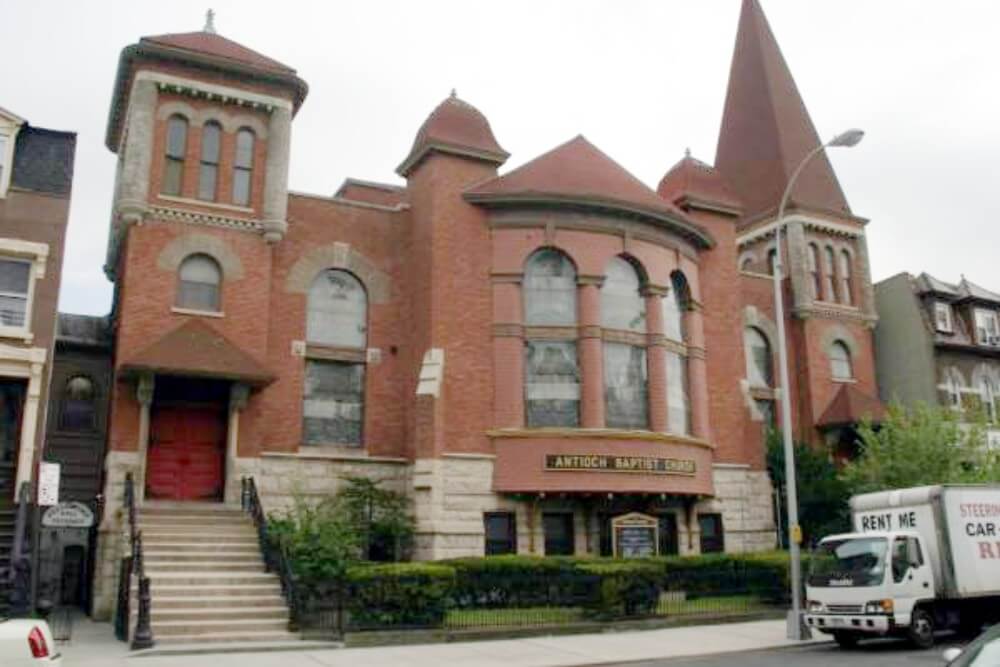
The church had to issue tickets for the funeral to assure invited family and friends would be able to get into the building. A large crowd of people waited in the street.
The horse-drawn hearses arrived at the church and pushed their way to the doorway. The caskets were carried into the church by the boys’ friends and families. Some of the pallbearers were boys who had survived the crash.
Dorothea Bertsch’s funeral was private, held in her home at 259 Stuyvesant Avenue. Dora, as she was called, was one of 10 children of Peter Bertsch and his deceased wife Emilie.
Peter Bertsch was a successful carriage maker with a factory in Bushwick. He was the captain in the 47th Regiment National Guard unit, and the president of the Arion Society and, later, the Schwabenbund, two of Bushwick’s important German singing societies.

While Dora’s distraught father sat at his daughter’s funeral, her sister, Emma, lay at death’s door in the hospital, a victim of the same accident. She was not expected to recover. The papers said Captain Bertsch was inconsolable and destroyed. He would soon turn that grief into anger and a lawsuit.
The tally-ho disaster’s fifth victim, William Gilchrist, also had a funeral at home. Rumor had it that William and Dora were engaged to be married, though neither family would confirm it.
It was said that in the long seconds before the fatal crash, the couple embraced, William trying to shield Dora with his body. He did not succeed and his body was severely damaged and broken; she remained untouched, save for the spear of wood in her brain that ended her life.
The Official Investigation and the Blame Game Begins
The investigations and hearings regarding the cause of the crash began as soon as funerals were over. The testimony went on for weeks. It all boiled down to bells and whistles.
The train crossing on Merrick Road did not have attendants or a retractable fence. The train’s approach was supposed to trigger a loud electric bell that rang well before the train came into view.
In addition, the engineer was required to sound his own whistle, warning those near the road that he was approaching.
Many witnesses were called to the coroner’s hearings. They included passengers on the train, the engineer, bicyclists from the outing, the carriage driver and other survivors of the crash, as well as locals who lived or worked near the tracks.

Did the track warning bell sound to warn the tally-ho? Did the train engineer sound his own whistle well before reaching the crossing? There were yeses and nos to both questions.
Several neighbors, drivers on the road at the time, bicyclists and victims testified that they heard no warning bell. Several testified as to hearing the train’s whistle, but not the bell. The bell in question was a large, heavy one, attached to a pole at the intersection. The railroad insisted that it was in working order.
The train’s engineer testified that he sounded his own whistle as he approached the crossing. Several other people testified that they heard this warning, but the train was less than 100 feet from the crossing when they did.
A Hempstead engineer named Thomas D. Smith was called on to testify as to the physical conditions of the crossing. He prepared diagrams that showed that the crossing was 26 feet wide. If someone was standing on the road, in the center of the tracks, they were able to see up the tracks some 1,300 feet up, past the point where the bell trigger was located.
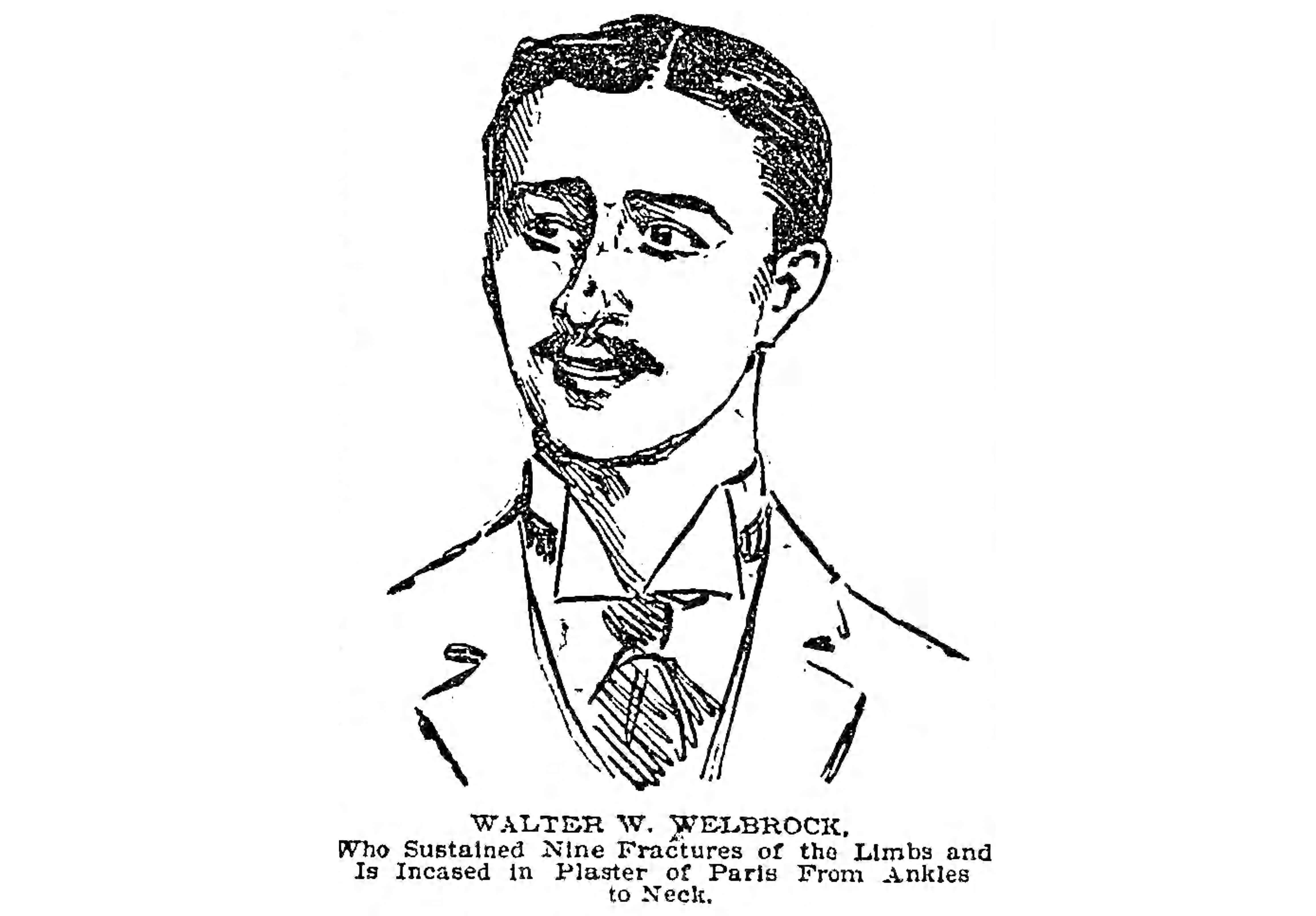
But beyond that point, the tracks were obscured by bushes and overgrowth. He testified that a man in an elevated seat, such as in a tally-ho coach, would have an obscured view.
The driver of the coach, William Henderson, was still recovering from a skull fracture and concussion. He missed the first hearing and a warrant went out for his arrest. It was recalled when his doctor reported that he was unable to testify.
He appeared in court several days later, still unsteady on his feet. He testified that the fateful trip was his first time on Merrick Road, and he was unaware there was a railroad crossing. He said that the kids on the coach were not so loud that he couldn’t hear a warning bell.
As he approached the crossing, he heard nothing and saw no train. He said that he didn’t see the train until it was upon him, and he managed to get the team of horses across the tracks, but not all of the coach.
Several other people testified, some very compellingly. No one could remember hearing the warning bell. One local Valley Stream man who owned an inn nearby told the court that he thought the bell had been malfunctioning for at least a month.
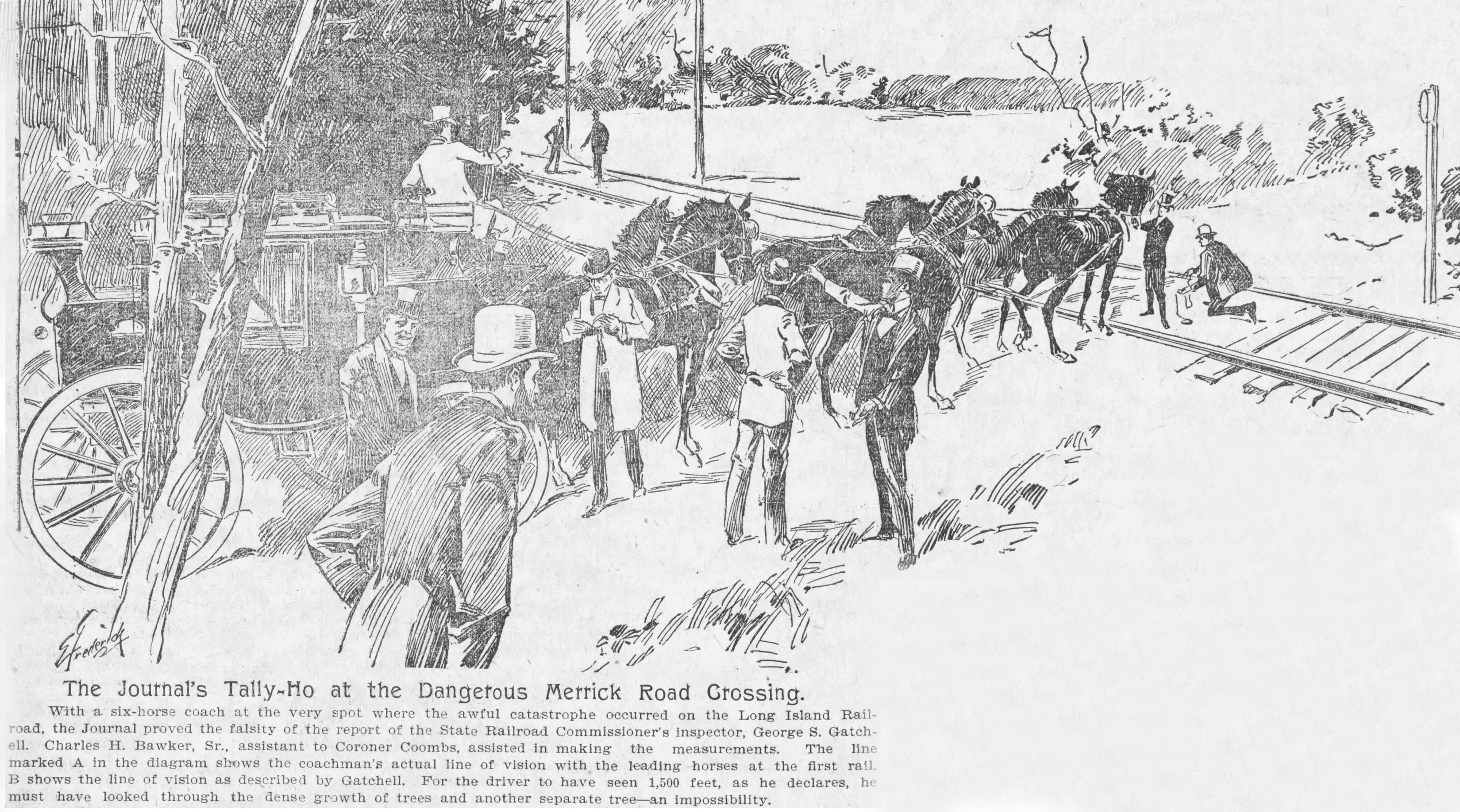
He testified that the bell would sound at all hours of the day and night, and no trains would pass. But he had noticed several occasions when trains would pass with no warning bell at all. He did not report this to the railroad, and no one from the railroad had been around to check.
One of the last witnesses was Thomas Hall Wyatt, an electrical engineering student who was one of only two passengers on the tally-ho not seriously injured. He told the court that the group had stopped at a rest stop right before the crash, and everyone had stopped blowing their horns.
He went on to say that they couldn’t see the train or the track until they were right on it. He said they only saw both instants before the crash. The train had sounded its whistle twice, as the engineer saw the coach on the tracks and slammed on the brake.
His third whistle was still blowing as the train smashed into the rear of the coach. Wyatt testified that the tally-ho driver had done all that was humanly possible to get the coach across the tracks, but he just didn’t have time. Young Wyatt saw no fault in the actions of William Henderson.
Not all of the testimony was against the railroad. There were witnesses who testified that the accident was the fault of the coachman, Henderson. They testified that he ignored the bells and whistles and was careless in his driving.
After several weeks of hearings and testimony, the coroner’s hearing was over. On June 25, 1893, the nine-member coroner’s jury came back with a verdict. They found the Long Island Railroad to be criminally negligent in not maintaining the bell at the crossing.
The jury ruled that just because the railroad was not required by law to have a manned gate or fencing at this dangerous intersection, they were required to make sure the bell worked at all times. They had not.
Because of this, the tally-ho was not warned of the train’s arrival until it stood across the tracks, when it was far too late.
While all of this was going on, lawyers were preparing lawsuits filed on behalf the dead, the injured, the families of the dead and injured, and the emotional distress of some of the witnesses.
They sued everyone in sight: the church that organized the event, the Long Island Railroad and the livery stable, as well as the engineer on the train, the coach driver and individual members of the LIRR board of directors. Suits against the church were eventually dropped.
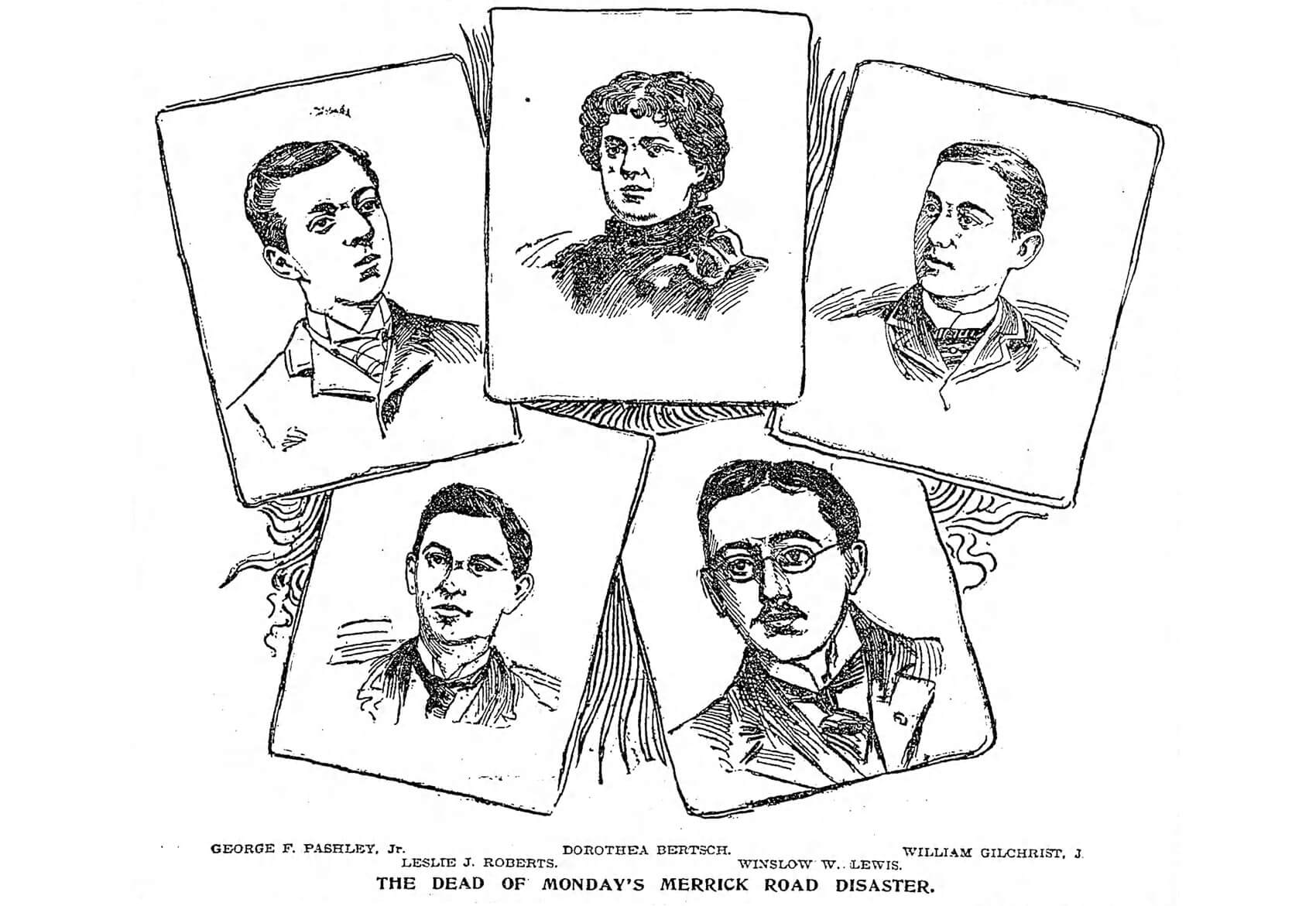
Many of the cases went to trial toward the end of 1897. The new president of the LIRR said that he would not fight legitimate claims. The railroad’s lawyers tried to minimize the damage.
During many of the trials they tried to place the blame on the livery driver and even on the passengers themselves. It didn’t work. Claims as high as $50,000 were settled, but lives were ruined all around.
There were the five dead and their families, of course. Many of the injured were physically disabled for life. Mrs. Newell Andrus, the chaperone who was riding on the coach, sued the railroad because of her injuries.
Her legs were broken in two places. Her husband sued separately for his own pain and suffering in having to deal with a disabled wife.
The Hamilton Livery Stables was forced out of business because of the many suits against them and their driver.
Peter Bertsch’s hospitalized daughter Emma woke up months after the accident with no memory of the event. She asked her father when she and her sister were going on the tally-ho ride.
That December, as the lawsuits were coming to trial, including his own, another Bertsch daughter, 18-year-old Ella, died suddenly at home. She had not been on the tally-ho ride. Before he died in 1906, Peter Bertsch lost his wife and seven of his 10 children.
The railroad, as the only deep pocket here, settled many of the suits, and fought others and won. After several more incidents, including one in 1901 where a LIRR employee was killed, the railroad was called on to do something.
The Brooklyn Eagle demanded that they either have crossing guards at all graded stops or install drop-down gates. Anything else was unacceptable.
Eventually, the most dangerous of crossings had gates installed. Warning bells were also upgraded and improved. Federal and state laws were changed to improve safety. The tally-ho disaster faded into obscure LIRR train lore.
Related Stories
- Building of the Day: 828 Greene Avenue (former Greene Avenue Baptist Church)
- This Mansard Roofed Romanesque Revival Pile Was a Bastion of Higher Education in Bed Stuy
- The Ornamental Delight of Twin Houses Stands Out on Willoughby Avenue
Email tips@brownstoner.com with further comments, questions or tips. Follow Brownstoner on Twitter and Instagram, and like us on Facebook.





What's Your Take? Leave a Comment